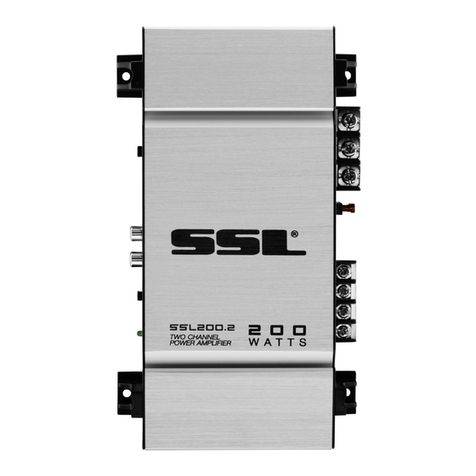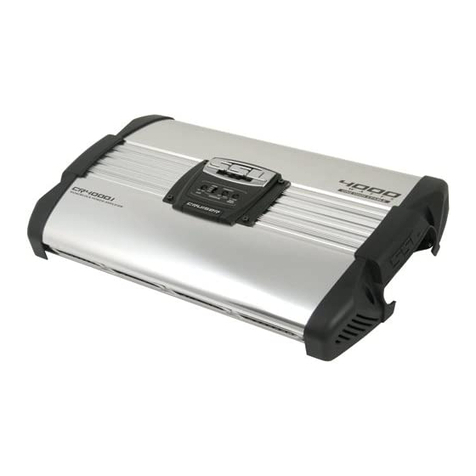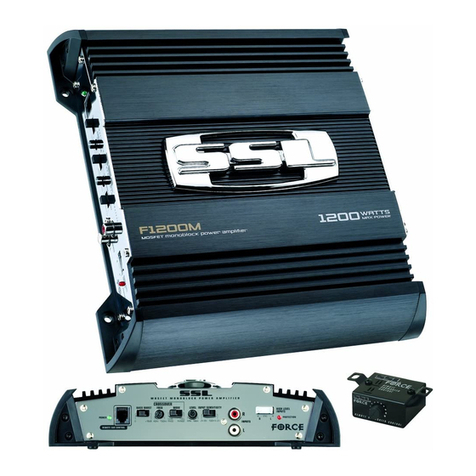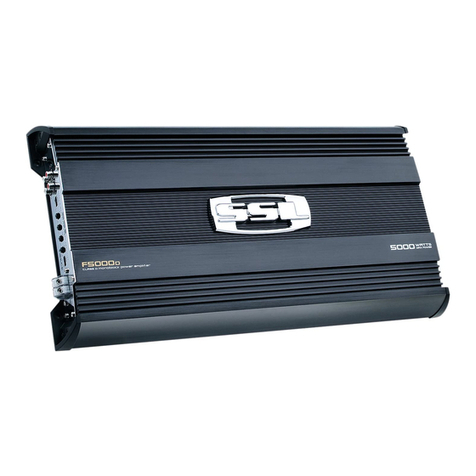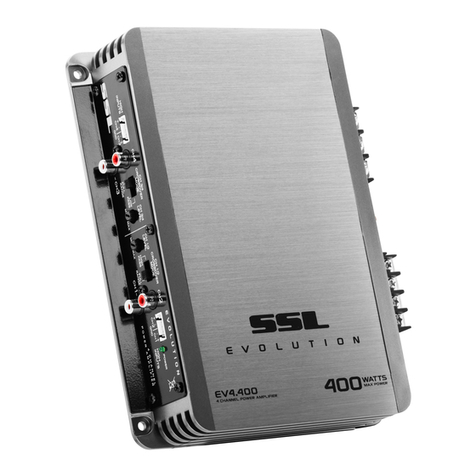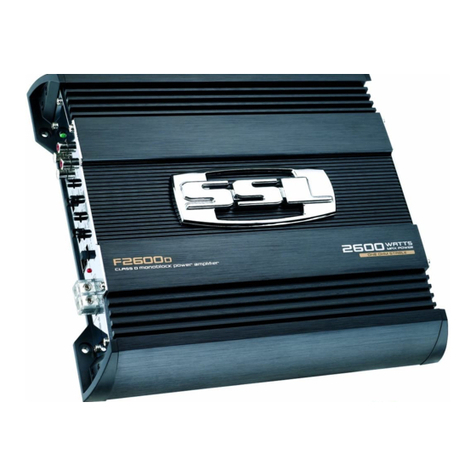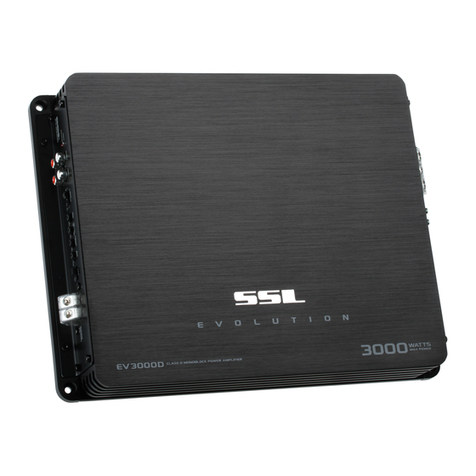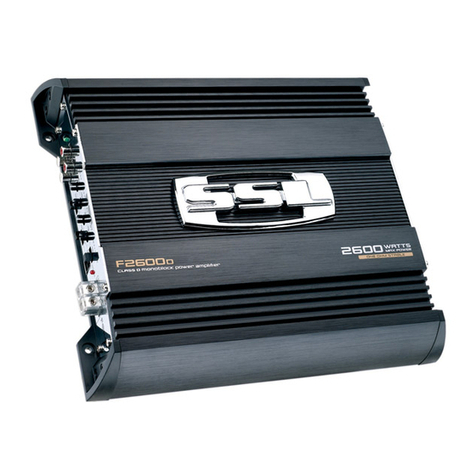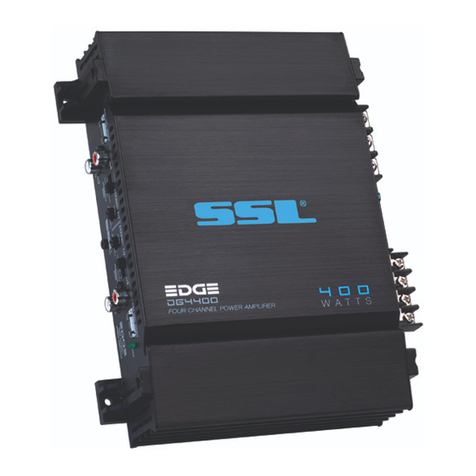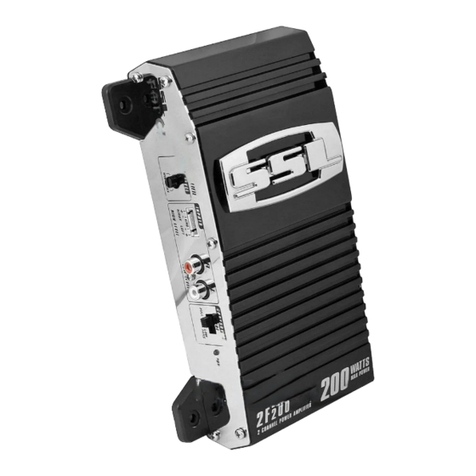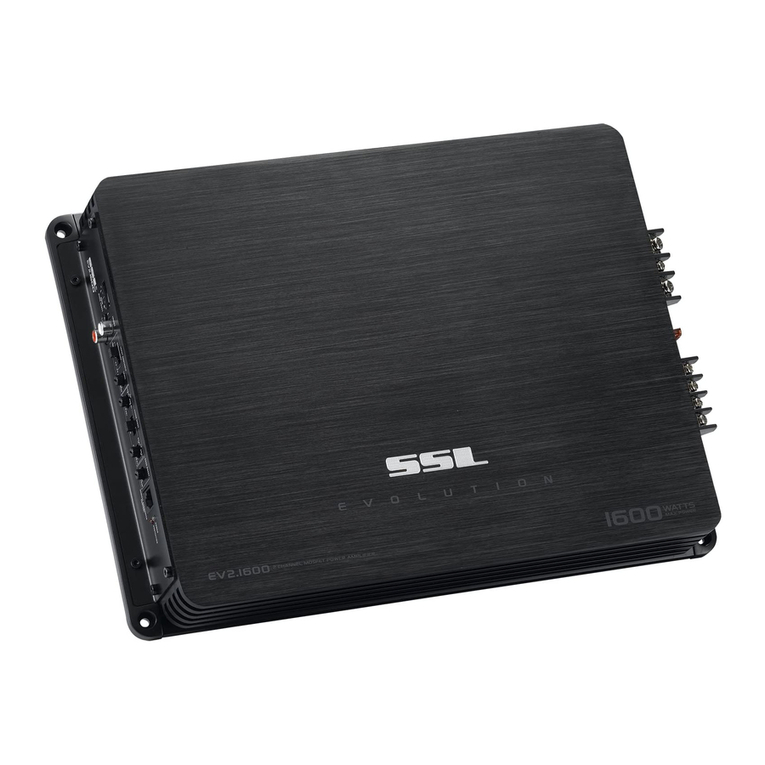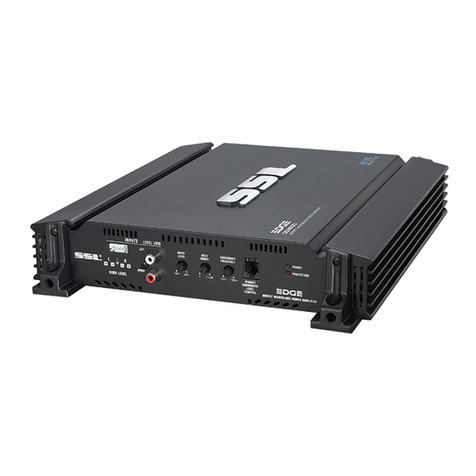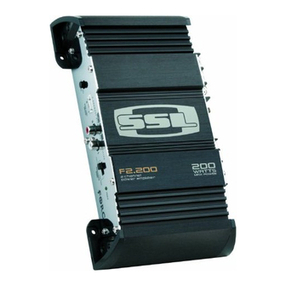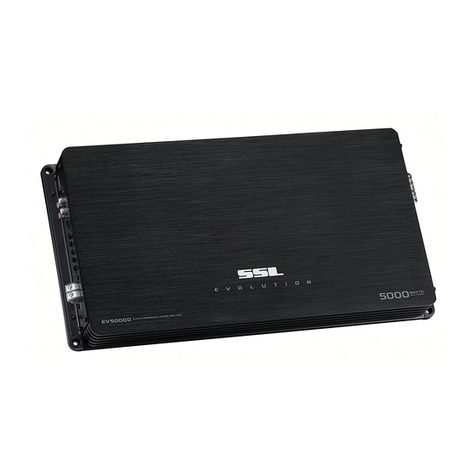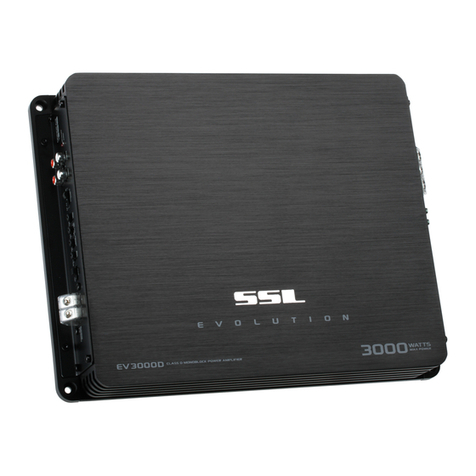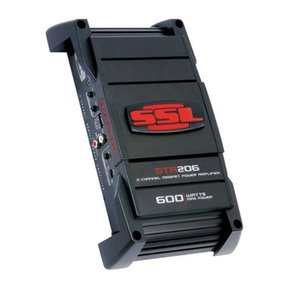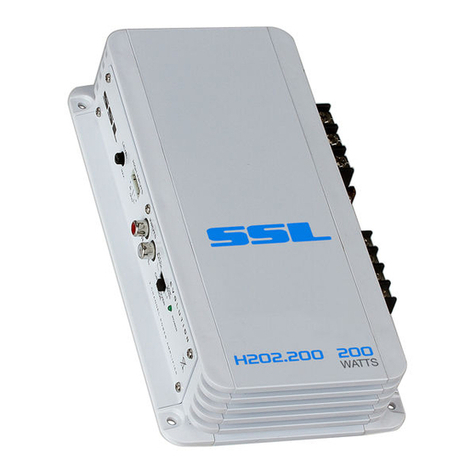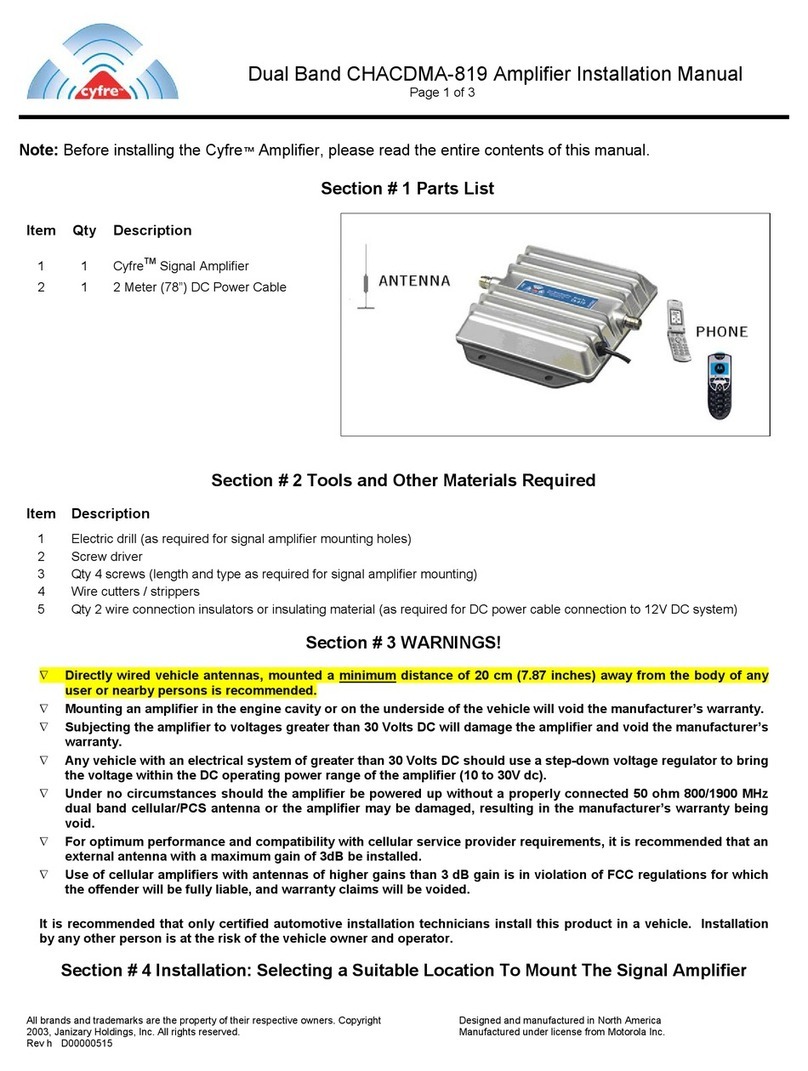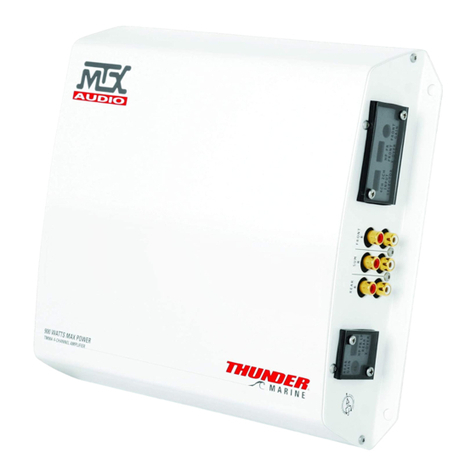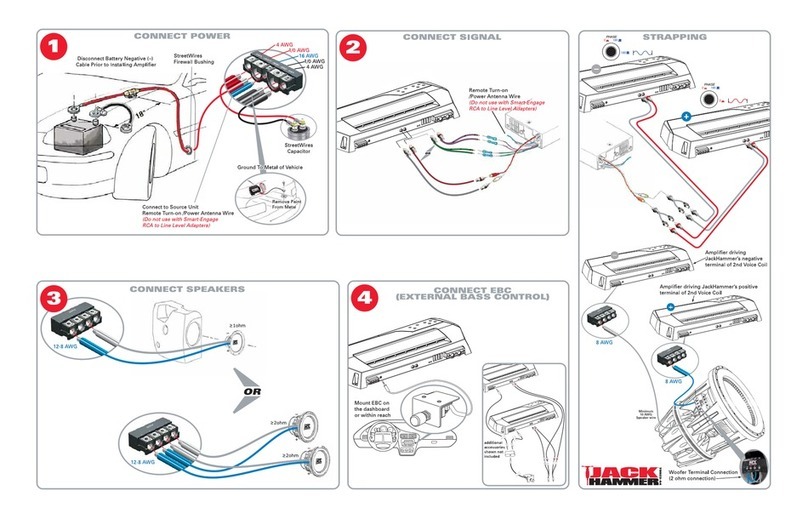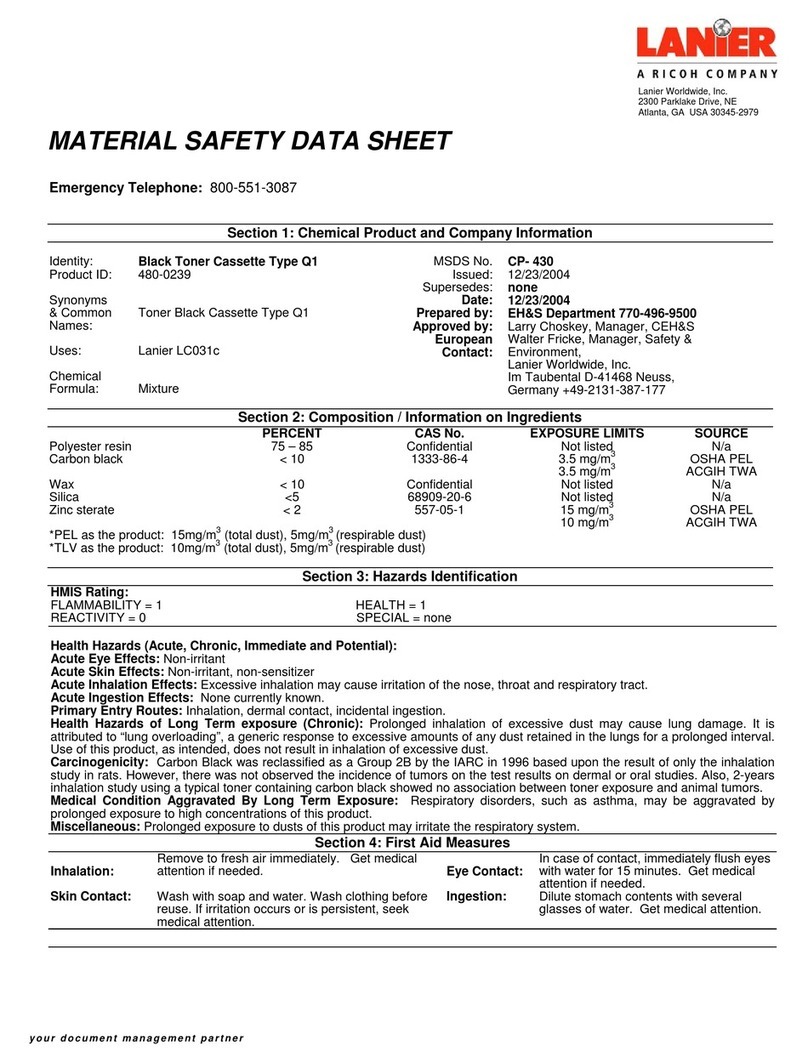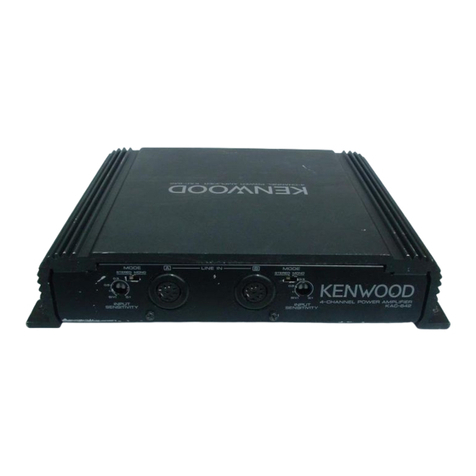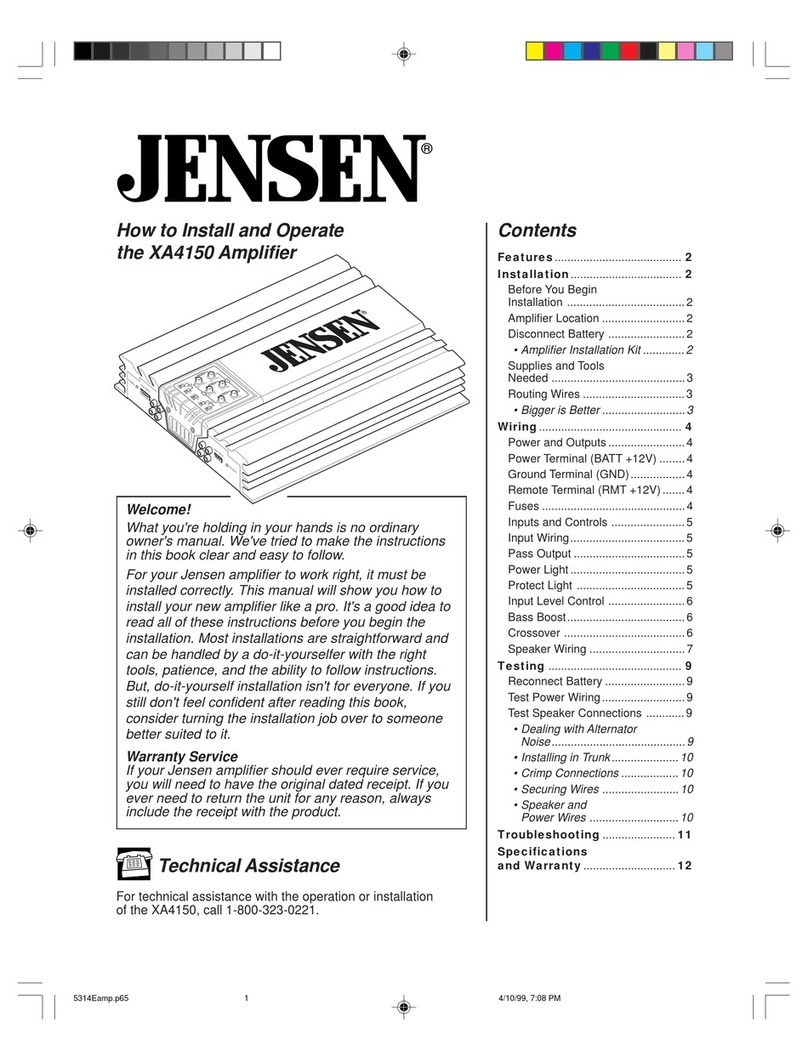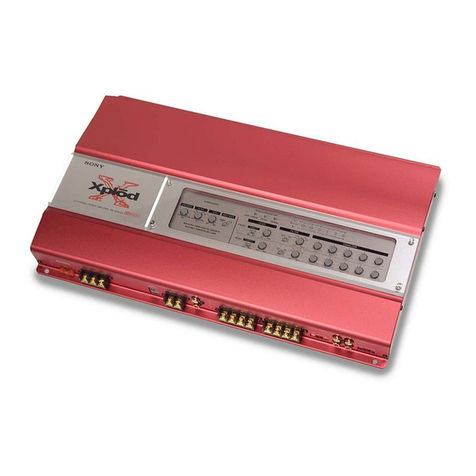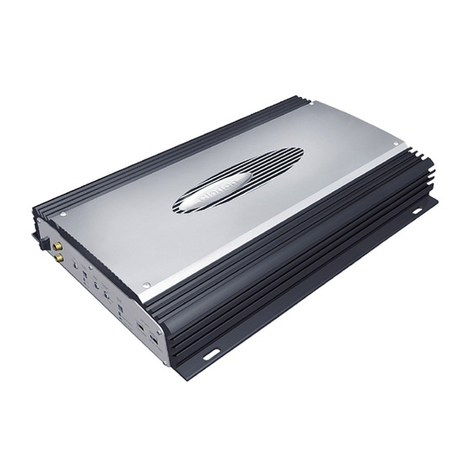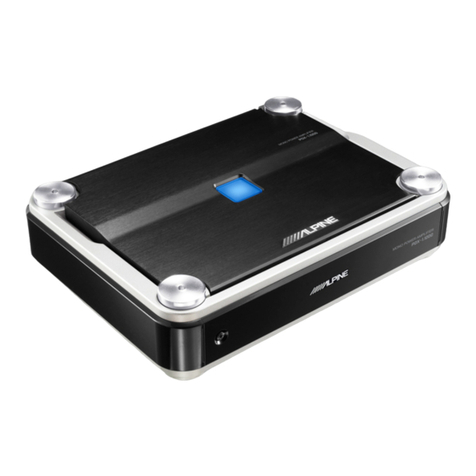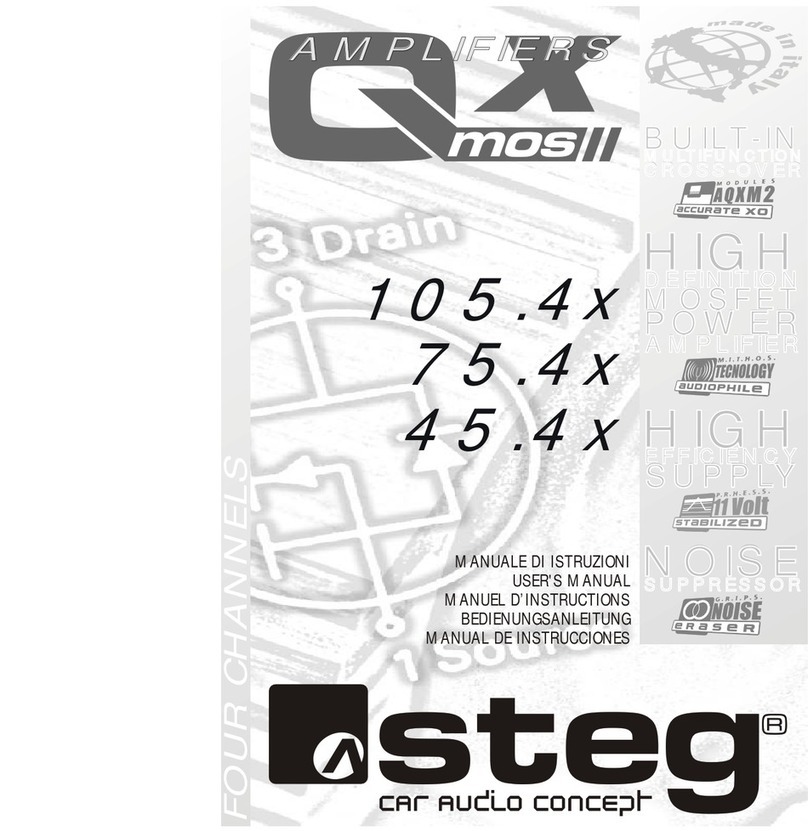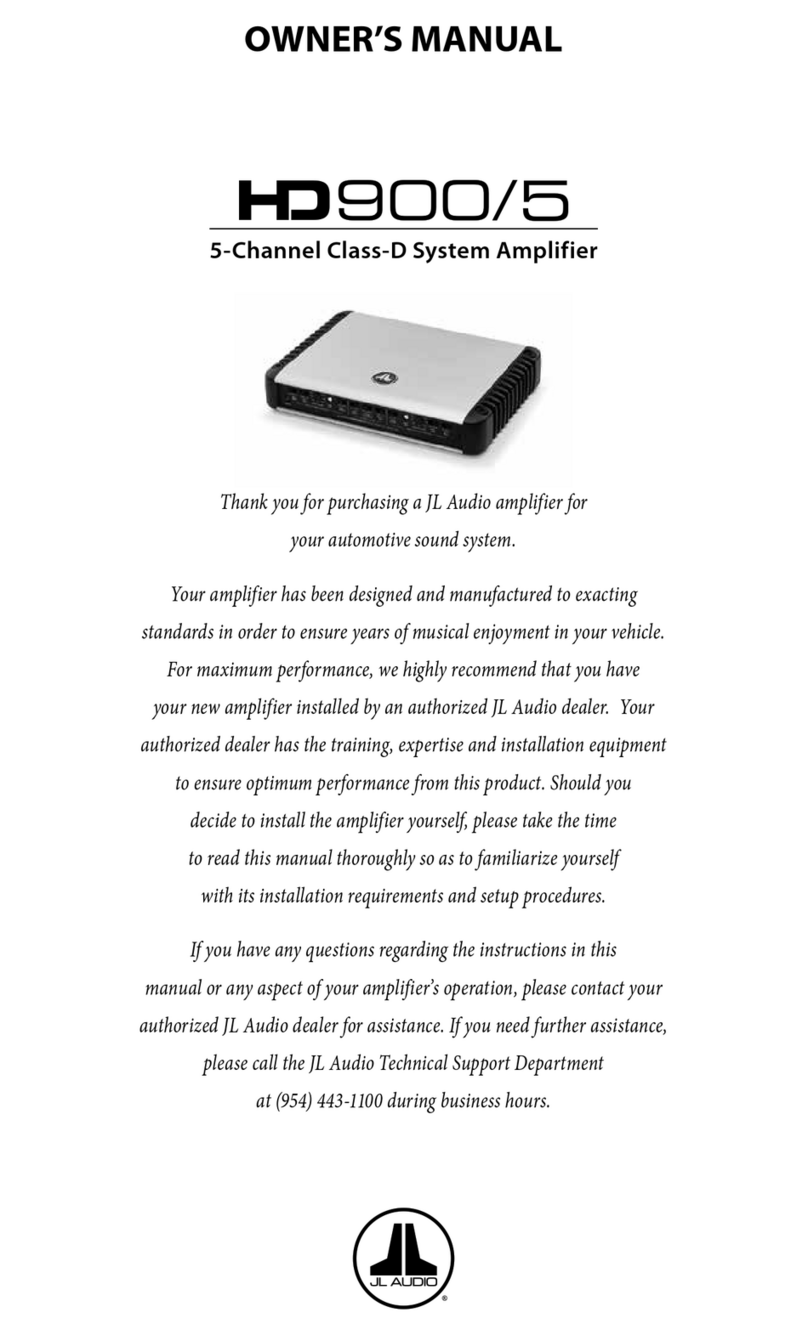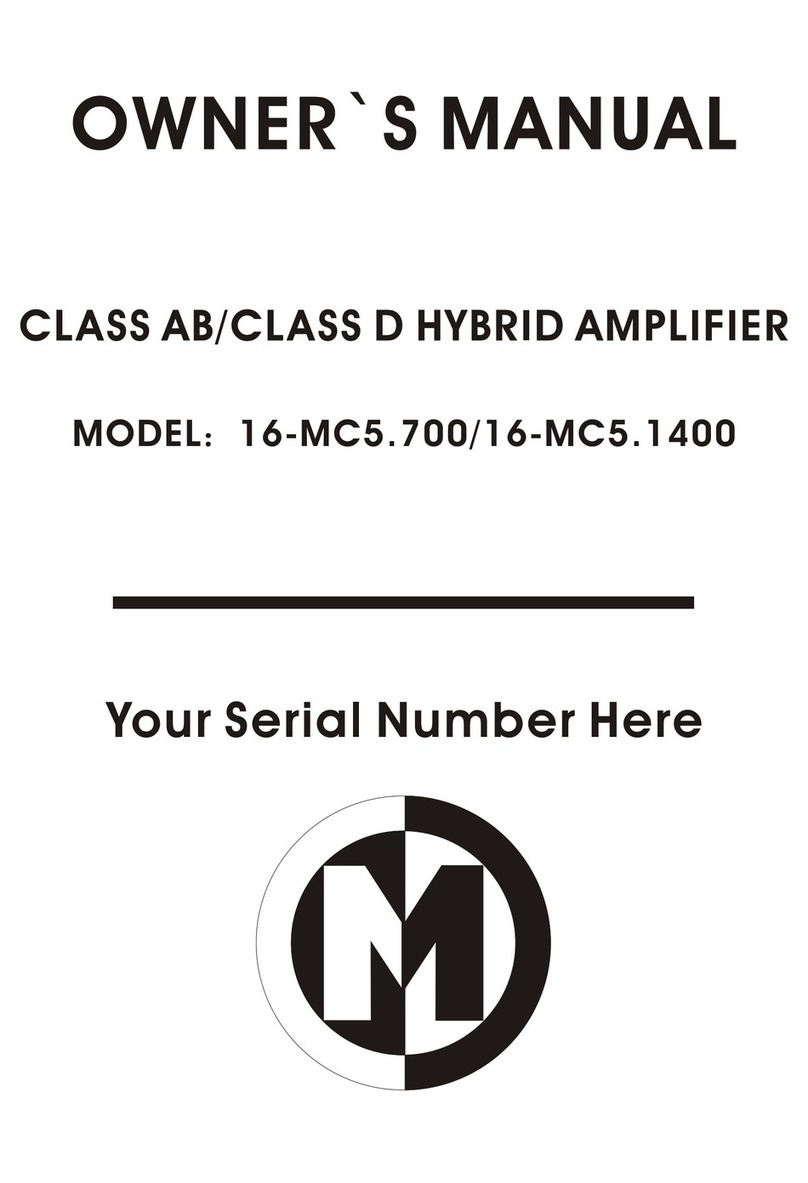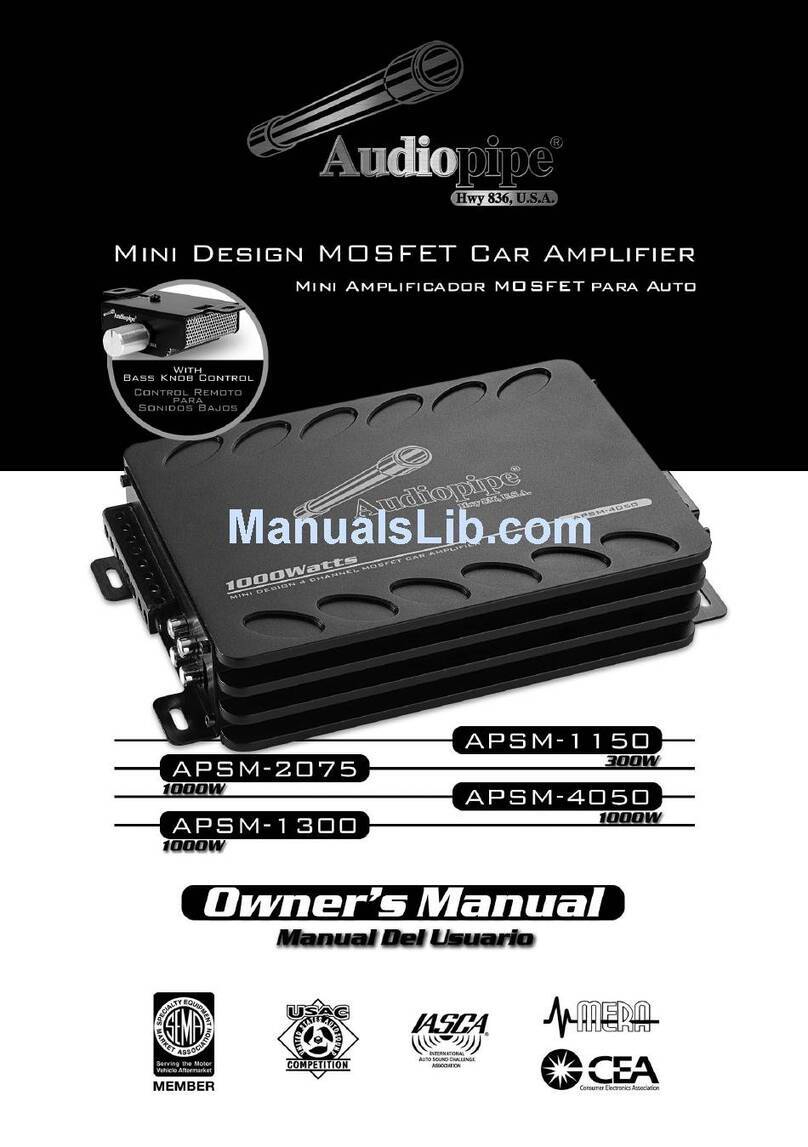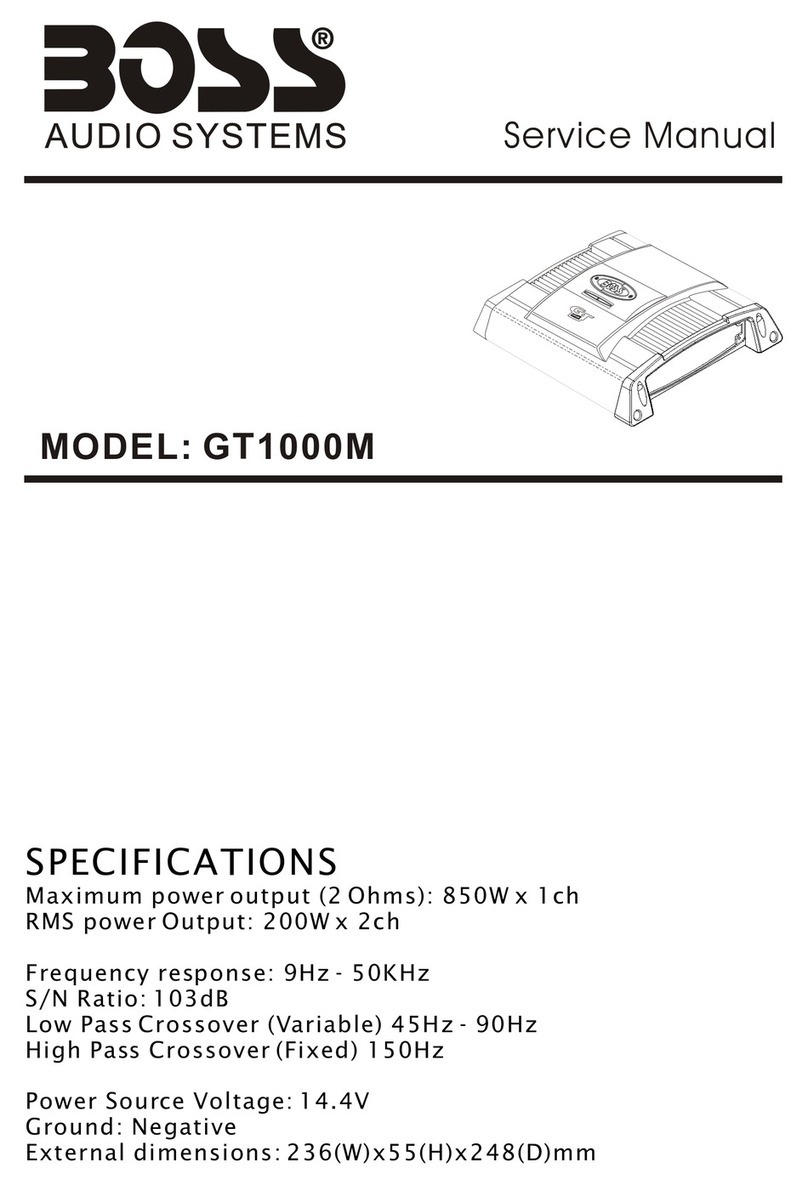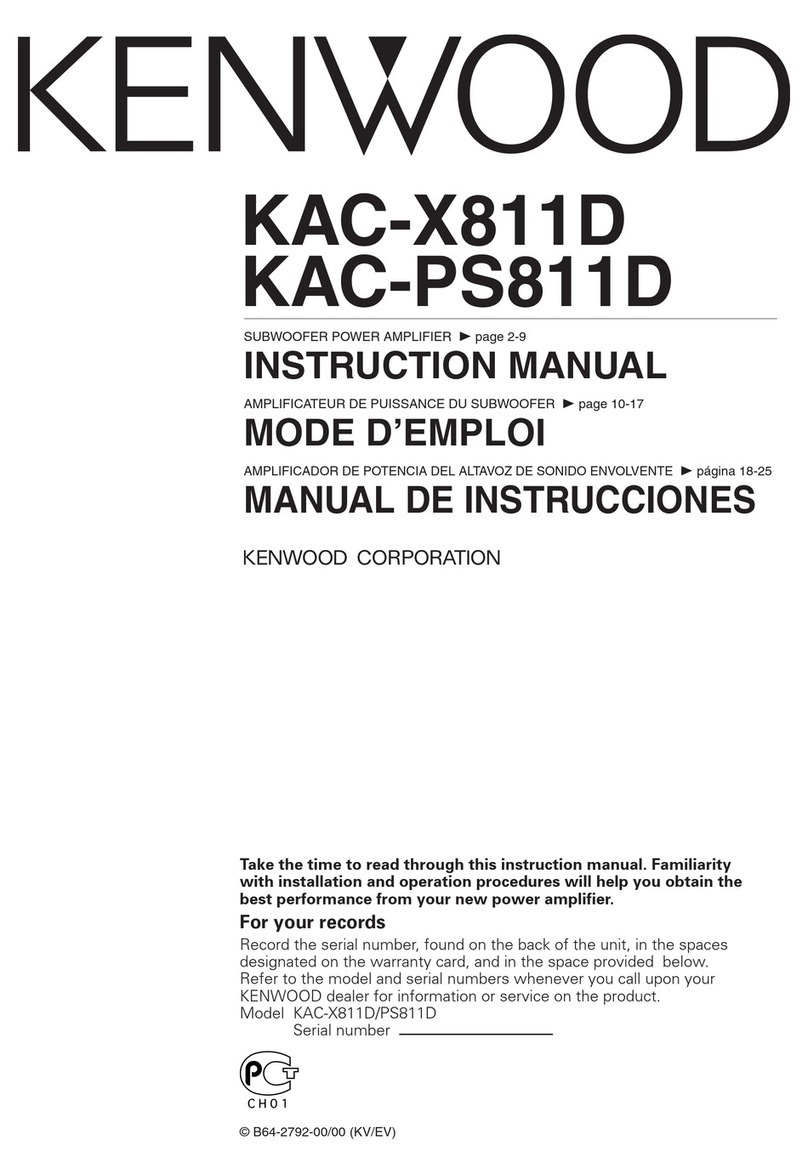Troubleshooting
STA120 • STA135 Amplifier User’s Manual - page 10
Specifications
STA120 • STA135 Amplifier User’s Manual - page 11
STA120 • STA135 Amplifier User’s Manual - page 6
CONTENTS
U S E R ’ S M A N U A L
STA120 • STA135 Amplifier User’s Manual - page 4
STA120 • STA135 Amplifier User’s Manual - page 3
STA120 • STA135 Amplifier User’s Manual - page 8
STA120 • STA135 Amplifier User’s Manual - page 5
STA120 • STA135 Amplifier User’s Manual - page 7
STA120 • STA135 Amplifier User’s Manual - page 9
STA120 • STA135 Amplifier User’s Manual - page 2
Introduction
Important installation
considerationsfor using
this amplifier.
Notes
If you experience operation or performance problems with this product, compare your
installation with the electrical wiring diagram on the previous pages. If problems persist,
read the following troubleshooting tips which may help eliminate the problems.
Low-level (RCA) input wiring is preferred for best audio performance. Always use
a high-quality RCA cable for best audio performance.
Protection LED
comes on when
amplifier is
powered up.
Check for short circuits on speaker leads.
Turn down the volume control on the head unit to prevent overdriving.
Remote speaker leads, andreset the amplifier. If the Protection LED still
comes on, then the amplifier is faulty and needs servicing.
High hiss in the
speakers.
Disconnect all RCA inputs to the amplifiers. If the hiss disappears,then
plug in the component driving the amplifier and unplug its inputs. If the
hiss disappears at this point, go on until the faulty/noisy component is
found.
It is best to set the amplifier's input level control as low as possible. The
best subjective signal-to-noise ratio is achieved in this manner. Try to set
the head unit as high as possible (without distortion) andthe amp input
level as low as possible.
Squealing noise
from speakers.
Check for improperly grounded RCA interconnects.
Distorted sound.Check that the Input Level Control is set to match the signal level of the
head unit. Always try to set the Input Level as low as possible.
Check thatall crossover frequencies are properly set.
Check for short circuits on the speakerleads.
Amplifier gets
very hot.
Check that the minimum speaker impedance for the amp model is correct.
Check thatthere is good air circulationaroundthe amp. In some
applications, it may be necessary to add andexternal cooling fan.
Engine noise
(static type)
This is usually caused by poor quality RCA cables,which can pick up
radiated noise. Use only the best quality cables, androute them away
from power cables.
Engine noise
(alternator
whine)
Check thatspeaker leads are not shorted to the vehicle chassis.
Check thatthe RCA grounds are not shorted to the vehicle chassis.
Check thatthe head unit is properly grounded.
Installation precautions
Before you drill or cut any holes,
investigate your car's layout very
carefully. Take special care when you
work near the gas tank, fuel lines,
hydraulic lines and electrical wiring.
Never operate the amplifier when it is
unmounted. Attach all audio system
components securely to prevent
damage, especially in an accident.
Before making or breaking power
connections in your system, disconnect
the vehicle battery. Confirm that your
head unit or other equipment is turned
off while connecting the input jacks and
speaker terminals.
If you need to replace the power fuse,
replace it only with a fuse identical to
that supplied with the amplifier. Using
a fuse of a different type or rating may
result in damage to your audio system
or your amplifier which is not covered
by the manufacturer's warranty.
Mounting the amplifier
1. Find a suitable location in the vehicle
in which to mount the amplifier.
2. Make sure there is sufficient air
circulation around the intended
mounting location.
Thefuse rating for the amp is 60A
(using two 30A fuses) forthe STA120
and 90A (using three 30A fuses) for
the STA135. Although sufficient for
normal working conditions,
overloading the amp may result in
blown fuses. Please try to avoid
overloading the amp in this manner.
Your Stealth Class D amplifier
is designed to run with a min-
imum load of 1 Ohm.
Operating the STA120 or
STA135 with a speaker imped-
ance load below 1 Ohm may
result in poor sound quality
and damage to the amplifier
circuitry. Such damage is not
covered under the warranty
for this product.
Bridging Two STA120 or Two STA135 Amplifiers
MASTER
AMPLIFIER
SLAVE
AMPLIFIER
Power Connections
Without Stiffening Capacitor
With Stiffening
Capacitor
Bridging Two STA120 or Two STA135 Amplifiers
SLAVE
AMPLIFIER
INPUT, SPEAKER AND DATALINK CONNECTIONS
(SEE NEXT PAGE FOR POWERCONNECTIONS)
POWER CONNECTIONS
(SEE PREVIOUS PAGE FOR INPUT, SPEAKER AND DATALINK CONNECTIONS)
General precautions
Before installing and usingyour new
Sound Storm Laboratories amplifier,
please become familiar with all the
information contained in this manual.
Please keep this manual in a safe
place for future reference.
• Do not open or attempt to repair this
unit yourself. Dangerous high voltages
arepresent which may result in electric
shock. Refer any repairs to a qualified
service technician.
• To avoid risk of electronic shock or
damage to the amplifier, do not permit
any of this equipment to become damp
or wet from water or drinks. If this does
occur, immediately unplug the power
wires and send the amplifier to your
local dealer or service center as soon
as possible.
• If there is smoke or anypeculiar odor
present during use or if there is damage
to any of the component enclosures,
immediately unplug the power cord
and send the amplifier to your local
dealer or service center as soon as
possible .
3. Mark the location for the mounting
hole screws by positioning the amplifier
where you wish to install it. Use a scribe
or mounting screw, inserted through
each of the amp's mounting holes, to
mark the mounting surface. If the
mounting surface is carpeted, measure
the hole centers and mark with a felt
tip pen.
4. Drill pilot holes in the mounting
surface for the mounting screws. Place
the amplifier in position, and attach
the amplifier to the mounting surface
securely using screws.
4. Check that the fuse holder is empty.
Then connect the fuseholder to the
"BATT+" connection on the amplifier.
5. If multiple amplifiersare being used
in your system, either:
• Run a separate pair of cables from
the battery and a chassis ground point
to each amplifier. Each (+) cable must
have its own inline fuse.
-or-
• Run a #0 cable from the fuse holder
at the battery to a distribution block
at or near the amplifier's location. Then
run separate cables from the amplifier
to this distribution block and to
independent chassis ground points.
6. Connect all line inputs and outputs
(if used) using high-quality cables.
Connect all speakers, following the
diagrams in this manual. Be sure to
observe proper polarity to avoid audio
phase problems.
7. Insert fuse(s) into the battery fuse
holder(s).
8. Recheck all connections before
powering up the amplifier.
9. Set all level controls to minimum
position, and set all crossover
controls/switches to the desired
frequency points.
10. Power up the head unit and the
amplifier. Then set the volume control
on the head unit to about 3/4 volume,
and adjust the amplifier’s input level
control(s) to just below the level of
distortion.
11. Further fine tuning of the various
controls may be necessary to obtain
best results.
Speaker Connections
MASTER
AMPLIFIER
2Introduction
2Features
3What is included?
3General precautions
3Installation precautions
3Mounting the amplifier
4Connecting the amplifier
5Important system considerations
5Tips for a safe system
6Low level input wiring
6Speaker wiring
7Power connections
Normal and with Stiffening Capacitor
8Bridging two Stealth
CLASS D Amplifiers
10 Troubleshooting
11 Specifications
Congratulations on your
purchase of a Sound Storm
Laboratories STEALTH
Class D Amplifier.
It has been designed, engineered
and manufactured to bring you
the highest level of performance
and quality, and will afford you
years of listening pleasure.
Thank you for making Sound
Storm Laboratories your choice
for car audio entertainment!
All specifications subject to
change without notice.
RMS POWER
into 4 Ohms
RMS POWER
into 2 Ohms
MAX POWER
into 2 Ohms
MAX POWER
into 1 Ohm
Min. speaker
impedance
Input
impedance
Input
sensitivity
Frequency response
Signal-to-noise ratio
Crossover/filter range
low pass
subsonic
Bass Boost
Phase Shift
Fuse rating
Dimensions:
(11
-3/4
" x 3" x ...)
1000Wx 1
1200Wx 1
1500Wx 1
2000Wx 1
1 Ohm Mono
10k Ohm
Selectable 100mV-2V or 2V-8V
50Hz-150Hz
100dB
50Hz-150Hz
15Hz-40Hz
Variable 0 -+18dB
Selectable 0/180º
30A x 2
11-3/8"
MODEL
page
STA120
STA135
CLASS D MonoBlock
Car Audio Amplifiers
CLASS D
MonoBlock Car Audio
Amplifier
1400Wx 1
2000Wx 1
2600Wx 1
3500Wx 1
1 Ohm Mono
10k Ohm
Selectable 100mV-2V or 2V-8V
50Hz-150Hz
100dB
50Hz-150Hz
15Hz-40Hz
Variable 0 -+18dB
Selectable 0/180º
30A x 3
12-1/2"
CLASS D
MonoBlock Car Audio
Amplifier
SYMPTOM POSSIBLE REMEDY
What is included?
When first unpacking your new
amplifier, please check first that the
package contains all of the items
below. If something is missing, contact
the store where you purchased the
player.
• Class D amplifier
• Remote subwoofer level control
• Remote subwoofer control cable
•DataLink cable (for strapping two
identical Stealth Class D amps
together)
• Four (4) mounting screws
STA120 • STA135 Amplifier User’s Manual - page 1
BRIDGED MODE
SWITCH IN MASTER
POSITION
BRIDGED MODE
SWITCH IN SLAVE
POSITION
To Audio Outputs of head
unit or Subwoofer outputs
of a signal processor
To Audio Inputs of
satellite amplifier
(if present)
To Audio Outputs of head unit
or Subwoofer outputs of a
signal processor
Chassis
ground
point
